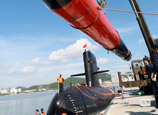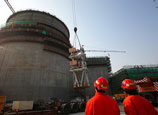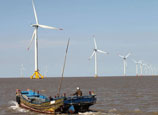
For instance, the Development and Reform Commission of Hunan Province on January 9 approved three wind power projects with a total investment of 1.35 billion yuan ($217 million).
One day later, China Datang Corp Renewable Power Co announced two wind power projects had been approved by authorities in Shandong Province and Chongqing.
"These newly built projects could help absorb some capacity of the wind turbines, but more wind power might be wasted in the future as it cannot be absorbed by grid operators," Li said.
China had 60.83 gigawatts of installed wind turbine capacity connected to the grid in 2012, according to the CWEA, and the country aims to increase it to 100 gigawatts by the end of 2015.
Curtailment, which refers to wind-power electricity that has been connected to the grid but held back by grid operators, is also a problem.
China's wind power sector lost about 20 billion kilowatt-hours to curtailment last year, according to the CWEA.
China Longyuan Power Group Corp, for one, lost 1.3 billion yuan to curtailment in 2012, Xie Changjun, the group's general manager, told a media briefing Thursday.
He from CWEA said further market-oriented reform is needed to ensure that more wind-generated electricity can be connected to the grid and transmitted to end-users.
"Grid companies lack economic incentives to take in more wind power, as government-dictated on-grid wholesale prices of wind power are higher than those of thermal power," said Meng Xian'gan, secretary-general of the China Renewable Energy Society.

















 Buildings collapse after subsidence in S China
Buildings collapse after subsidence in S China


![]()
